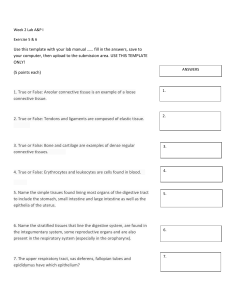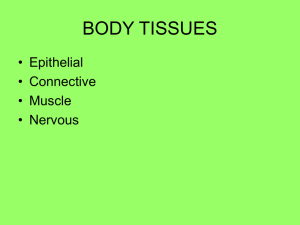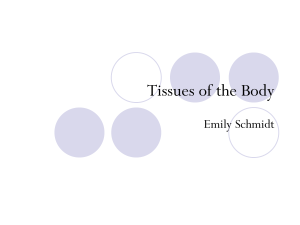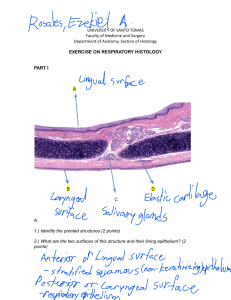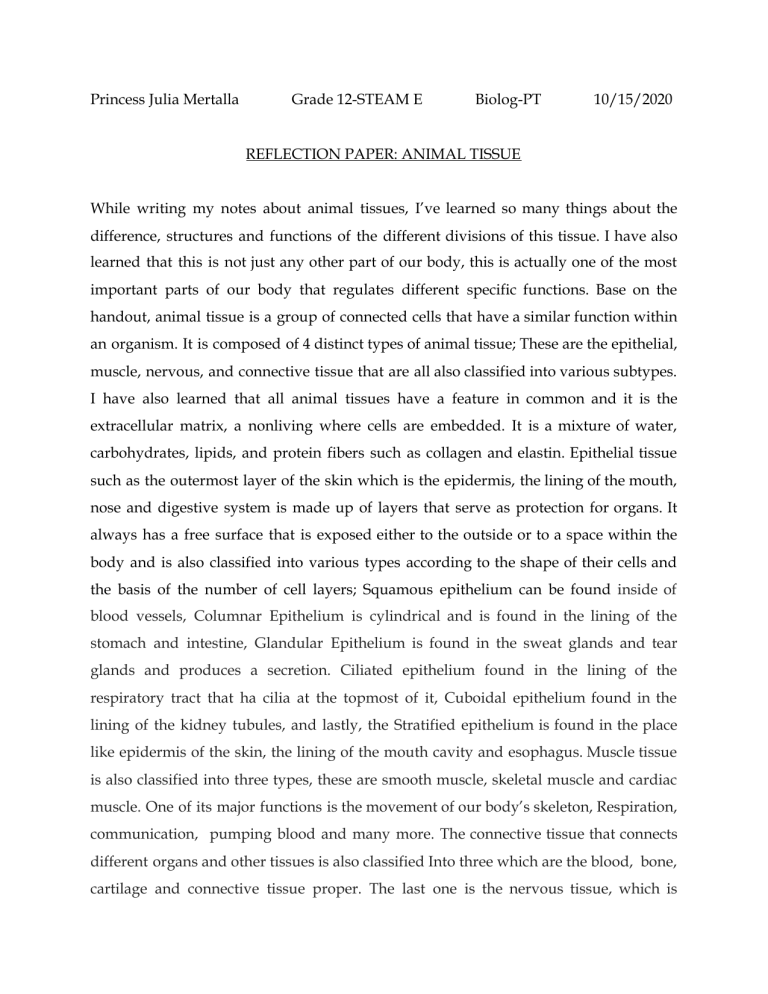
Princess Julia Mertalla Grade 12-STEAM E Biolog-PT 10/15/2020 REFLECTION PAPER: ANIMAL TISSUE While writing my notes about animal tissues, I’ve learned so many things about the difference, structures and functions of the different divisions of this tissue. I have also learned that this is not just any other part of our body, this is actually one of the most important parts of our body that regulates different specific functions. Base on the handout, animal tissue is a group of connected cells that have a similar function within an organism. It is composed of 4 distinct types of animal tissue; These are the epithelial, muscle, nervous, and connective tissue that are all also classified into various subtypes. I have also learned that all animal tissues have a feature in common and it is the extracellular matrix, a nonliving where cells are embedded. It is a mixture of water, carbohydrates, lipids, and protein fibers such as collagen and elastin. Epithelial tissue such as the outermost layer of the skin which is the epidermis, the lining of the mouth, nose and digestive system is made up of layers that serve as protection for organs. It always has a free surface that is exposed either to the outside or to a space within the body and is also classified into various types according to the shape of their cells and the basis of the number of cell layers; Squamous epithelium can be found inside of blood vessels, Columnar Epithelium is cylindrical and is found in the lining of the stomach and intestine, Glandular Epithelium is found in the sweat glands and tear glands and produces a secretion. Ciliated epithelium found in the lining of the respiratory tract that ha cilia at the topmost of it, Cuboidal epithelium found in the lining of the kidney tubules, and lastly, the Stratified epithelium is found in the place like epidermis of the skin, the lining of the mouth cavity and esophagus. Muscle tissue is also classified into three types, these are smooth muscle, skeletal muscle and cardiac muscle. One of its major functions is the movement of our body’s skeleton, Respiration, communication, pumping blood and many more. The connective tissue that connects different organs and other tissues is also classified Into three which are the blood, bone, cartilage and connective tissue proper. The last one is the nervous tissue, which is formed by neurons and neuroglia. Without these many levels of structural organization, our body or an organism's body will not function as it is since they are well-specialized to protect our different vital organs and to absorb elements that are necessitated for our body to work properly from the external environment.

